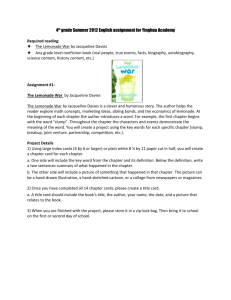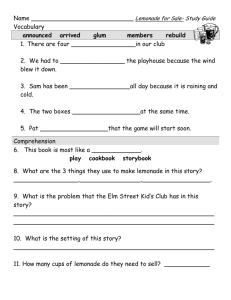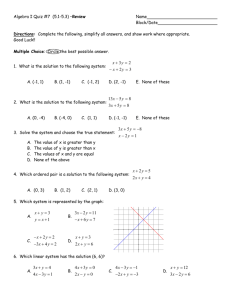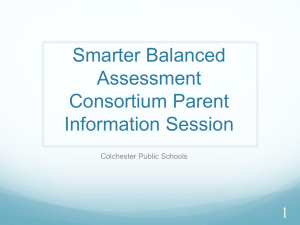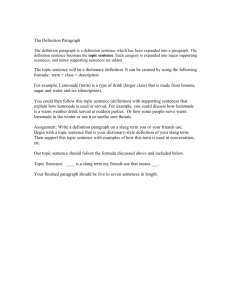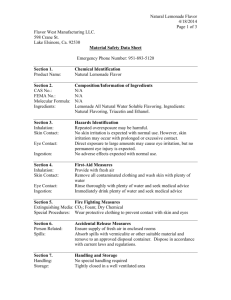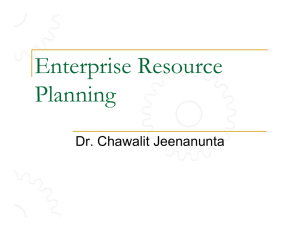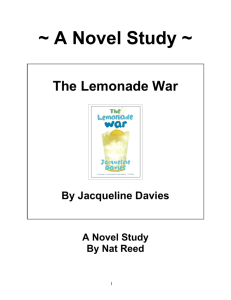Grade 3, Unit 6: Economic Literacy: Businesses and Entrepreneurs
advertisement
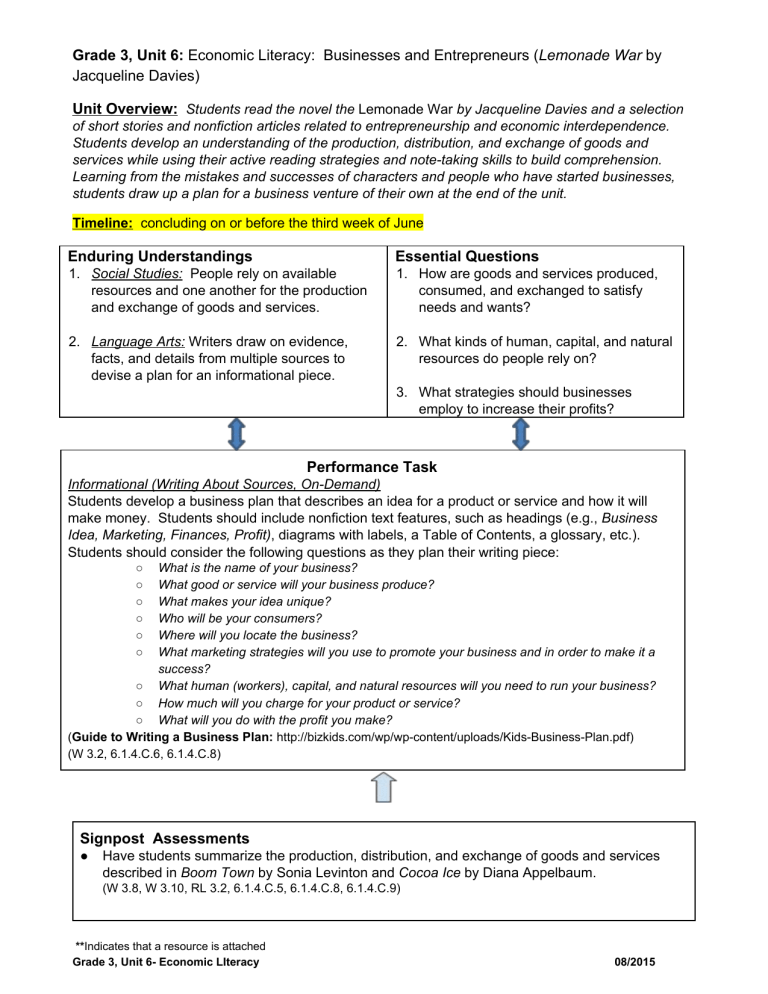
Grade 3, Unit 6: Economic Literacy: Businesses and Entrepreneurs ( Lemonade War by Jacqueline Davies) Unit Overview: Students read the novel the L emonade War b y Jacqueline Davies and a selection of short stories and nonfiction articles related to entrepreneurship and economic interdependence. Students develop an understanding of the production, distribution, and exchange of goods and services while using their active reading strategies and note­taking skills to build comprehension. Learning from the mistakes and successes of characters and people who have started businesses, students draw up a plan for a business venture of their own at the end of the unit. Timeline: concluding on or before the third week of June Enduring Understandings Essential Questions 1. Social Studies: People rely on available resources and one another for the production and exchange of goods and services. 1. How are goods and services produced, consumed, and exchanged to satisfy needs and wants? 2. Language Arts: Writers draw on evidence, facts, and details from multiple sources to devise a plan for an informational piece. 2. What kinds of human, capital, and natural resources do people rely on? 3. What strategies should businesses employ to increase their profits? Performance Task Informational (Writing About Sources, On­Demand) Students develop a business plan that describes an idea for a product or service and how it will make money. Students should include nonfiction text features, such as headings (e.g., B usiness Idea, Marketing, Finances, Profit) , diagrams with labels, a Table of Contents, a glossary, etc.). Students should consider the following questions as they plan their writing piece: ○ ○ ○ ○ ○ ○ What is the name of your business? What good or service will your business produce? What makes your idea unique? Who will be your consumers? Where will you locate the business? What marketing strategies will you use to promote your business and in order to make it a success? ○ What human (workers), capital, and natural resources will you need to run your business? ○ How much will you charge for your product or service? ○ What will you do with the profit you make? ( Guide to Writing a Business Plan: h ttp://bizkids.com/wp/wp­content/uploads/Kids­Business­Plan.pdf) (W 3.2, 6.1.4.C.6, 6.1.4.C.8) Signpost Assessments ● Have students summarize the production, distribution, and exchange of goods and services described in Boom Town by Sonia Levinton and C ocoa Ice b y Diana Appelbaum. (W 3.8, W 3.10, RL 3.2, 6.1.4.C.5, 6.1.4.C.8, 6.1.4.C.9) ** Indicates that a resource is attached Grade 3, Unit 6­ Economic LIteracy 08/2015 Signpost Assessments (continued) ● Literary Analysis (Writing About Sources, On­Demand) Have students use the notes they collected on the two main settings in Cocoa Ice by Diana Appelbaum to respond to the following prompt: Describe how the author uses sensory details to establish two different settings in the passages, "Cocoa" and "Ice." Write an essay that compares and contrasts the two settings. Be sure to include details from both passages when writing the essay. (W 3.1, W 3.8, W 3.10, RL 3.9, 6.1.4.C.9) ● Literary Analysis(Writing About Sources, On­Demand) Have students use the notes they collected while reading The Lemonade War by Jacqueline Davies to write a short essay that describes the relationship between Evan and Jessie and explains how their relationship changed from the beginning to the end of the story. ○ Scaffold: The teacher may supply paragraph frames for students as necessary.** (W 3.8, W 3.10, RL 3.3) ● Exit Card: Responses to the “Essential Questions” (6.1.4.C.5, 6.1.4.C.6, 6.1.4.C.8) Suggested Activities ● While reading articles from Scholastic News* * and Newsela,** discuss and take notes on the qualities of entrepreneurs. (W 3.8, RI 3.1, RI 3.4, 6.1.4.C.13) ● While reading Cocoa Ice by Diana Appelbaum,discuss how and why it is important that people from diverse cultures collaborate for economic purposes. ( SL 3.1, 6.1.4.A.15) ● Note­Taking ( Cocoa Ice by Diana Appelbaum, Boom Town b y Sonia Levitin ): ○ Have students collect notes and the production, distribution, and exchange of goods and services described in the Cocoa Ice and Boom Town. ○ ● Discuss the concepts of trade and economic interdependence while reading Cocoa Ice by Diana Applebaum. Have students use a graphic organizer** to record key details to compare and contrast the two main settings, Santo Domingo and Maine, in preparation for writing a literary analysis essay. (W 3.8, RL 3.1, 6.1.4.C.5, 6.1.4.C.8) Literary Analysis (Writing About Sources, On­Demand) Uncle Jacob plays an important role in linking the lives of two little girls­ one from Santa Domingo and one from Maine. Using details from the text, have the students explain how Jacob helps each of the girls learn about life in a faraway place. (W 3.1, W 3.8, W 3.10, RL 3.3) ● Note­Taking ( The Lemonade War by Jacqueline Davies) ○ Have students use a cause and effect graphic organizer** to record the actions (causes) that Jessie and Evan each take with their lemonade stands and the effects they have on the competition. When writing the actions of each character, students may use color to represent the increasing intensity of revenge and anger involved by moving from cool to warm colors. ○ Have students analyze the relationship between Jessie and Evan over the course of the novel. Students may use a graphic organizer** to record text evidence and their own thinking about the relationship between the two characters in preparation to write a literary analysis essay. (W 3.8, RL 3.3) ** Indicates that a resource is attached Grade 3, Unit 6­ Economic LIteracy 08/2015 Suggested Activities (continued) ● There are numerous similes in T he Lemonade War by Jacqueline Davies (pages 9, 22, 40, 61, 91, 126, 130, 135, 172). Have students locate and write down these similes. Identify and explain what is being compared. Have students write three sentences of their own that incorporate similes to make new comparisons. There are also idioms (e.g. pg 75, 142) and metaphors throughout the book that may be identified and discussed. (L 3.5) ● After reading The Lemonade War b y Jacqueline Davies, research “Alex’s Lemonade Stand, ” a non­profit organization dedicated to helping fund research to end childhood cancer. Set up a class (or grade­level) lemonade stand and assist students as they plan the business, gather resources, create advertisements, and employ marketing strategies. If possible, invite parents to help students sell the lemonade during their lunch/recess periods. Students can donate the profits of their lemonade stand to the charity. (6.1.4.C.5, 6.1.4.C.6) Anchor Charts: ● ● ● Text Types and Features (Realistic Fiction, Historical Fiction, Nonfiction/Informational) Visual organizers for “Essential Questions” and student “Exit Cards” Teaching Points for Informational Writing ** Indicates that a resource is attached Grade 3, Unit 6­ Economic LIteracy 08/2015 Teaching Points Social Studies ● ● ● ● ● Describe the role and relationship among households, businesses, laborers, and governments within the economic system (6.1.4.C.6) Explain the role of specialization in the production and exchange of goods and services (6.1.4.C.5) Describe how production, distribution, and consumption of goods and services are interrelated and are affected by the global market and events in the world community (6.1.4.C.8) Compare and contrast how the availability of resources affects people across the world differently (6.1.4.C.9) Explain how and why it is important that people from diverse cultures collaborate to find solutions to community, state, national, and global challenges (6.1.4.A.15) Reader’s Workshop Reading Literature ● ● ● ● ● ● ● ● ● ● Identify sensory words and phrases relating to the setting of the story (RL 3.4, L 3.5) Analyze and interpret figurative language (L 3.5) Support thinking of the text with specific evidence from the text (RL 3.1) Compare and contrast character traits and actions and how they affect the sequence of events (RL 3.3) Write summaries that reflect literal understanding of a text (RL 3.2) Sequence the important events of a text (RL 3.3) Determine the central message in stories (RL 3.2) Compare and contrast the setting of two stories (RL 3.9) Follow and remember multiple events in a story, often involving multiple characters, in order to understand the plot (RL 3.2, RL 3.3) Recognize and actively work to solve new vocabulary words (RL 3.4) Reading Informational ● ● ● ● ● ● Ask and answer questions before and during the reading of nonfiction (RI 3.1) Determine the main idea of a text (RI 3.2) Identify details in a text to support the main idea (RI 3.2) Notice how the writer has organized an informational text (categories, subcategories, sequence, etc.) (RI 3.5, RI 3.8) Determine the meaning of academic and domain specific vocabulary (RL 3.5, RI 3.4) Make text­to­text and text­to­world connections when reading nonfiction (RI 3.8) ** Indicates that a resource is attached Grade 3, Unit 6­ Economic LIteracy 08/2015 Writing About Reading ● ● ● ● ● ● ● ● ● ● ● Paraphrase important details when taking notes on a text (RI 3.2) Use a graphic organizer to take notes on a literary passage and sort text evidence into provided categories Understand on­demand writing as a response carefully tailored to meet precise instructions (W 3.10) Relate important events to each other or other text (RI 3.8) Write summaries about literal understandings of a text (W 3.8, RL 3.2) Use notes as a basis for discussion or later writing (W 3.8, W 3.10) Understand that on­demand writing is a particular kind of writing that often requires writing about an assigned topic (W 3.10) Determine important information in nonfiction when taking notes (RI 3.2) List significant events in a story or ideas in an informational text (RL 3.2, RI 3.2, W 3.8) Reflect both prior knowledge and evidence from the text in responses to texts (RL 3.2, RI 3.2, W 3.8) Analyze on­demand writing prompts to determine purpose, audience, and genre (story, essay, persuasive letter, etc) (W 3.10) Writer’s Workshop Informational (W 3.2) ● ● ● ● ● ● ● ● ● ● ● ● ● ● Understand informational writing explains or give facts about a topic (W 3.2) Introduce the topic (W 3.2a) Use headings to organize information in categories (W 3.2a) Provide facts,definitions and details related to the topic (W 3.2b) Use linking words and phrases to connect ideas (W 3.2c) Provide a concluding statement or section (W 3.2d) Revise to include adjectives and adverbs as modifiers (L 3.1a) Use some vocabulary specific to the topic (L 3.3a) Use subject and verb agreement (e.g., we were ) (L 3.1f) Use nouns and pronouns that are in agreement (e.g., Mike/he ) (L 3.1f) Use commas correctly in a series (L 3.2) Edit for correct spelling, consulting reference materials as needed (L 3.2e, L 3.2f, L 3.2g) Use technology to publish writing (W 3.6) Share writing with peers and offer feedback regarding their writing (Author’s Day Celebration) (SL 3.1c) ** Indicates that a resource is attached Grade 3, Unit 6­ Economic LIteracy 08/2015 Resources Literary: ● ● ● ● ● Pickle Patch Bathtub by Frances Kennedy Fly Away Home by Eve Bunting Cocoa Ice by Diana Appelbaum ( Harcourt Trophies Anthology,pages 224­253) Boom Town by Sonia Levitin ( Harcourt Trophies Anthology,pages 196­215) The Lemonade War by Jacqueline Davies ( Core Novel) Informational: ● “An Inventor Who Saved the World” by Zach Jones from S cholastic News, O ctober 2011** http://www.scholastic.com/browse/article.jsp?id=3756577 ● ● ● ● ● ● “10­year old Texas Girl Has a Growing Lemonade Business” by Dallas Morning from Newsela, May 2015** https://newsela.com/articles/lemonade­biz/id/9594/ “Free Market Economy” (Grade 3 Social Studies textbook, pages 422­425) “Earn, Spend, and Save” (Grade 3 Social Studies textbook, pages 426­431) “Workers and Consumers” (Grade 3 Social Studies textbook, pages 388­392) “How Business Works” (Grade 3 Social Studies textbook, pages 394­397) “Trading with the World” (Grade 3 Social Studies textbook, pages 400­403) Visual/Multimedia: ● ● ● “Alex’s Lemonade Stand:” http://www.alexslemonade.org/ “Create Your Own Ad:” http://pbskids.org/dontbuyit/advertisingtricks/createyourownad_flash.html “Virtual Lemonade Stand:” http://www.omsi.edu/exhibits/moneyville/activities/lemonade/lemonadestand.htm ** Indicates that a resource is attached Grade 3, Unit 6­ Economic LIteracy 08/2015 Sample Paragraph Frames for Literary Analysis Essay on The Lemonade War In the Lemonade War by Jacqueline Davies, the relationship between the two main characters changes from negative to supportive by the end of the book. In the beginning, Jessie and Evan had a ___________________ relationship. There is text evidence in the first few chapters to support this idea. For example, _____________________________________________________________________________ __________________________________________________________________. This made me think their relationship was negative because ______________________ ____________________________________________________________________________. In addition, _________________________________________________________________ __________________________________________________________________. This shows their relationship was negative because ______________________________ __________________________________________________________________. At the end of the book, Jessie and Evan’s relationship changed from ___________________________ to __________________________. There is text evidence in the last chapter to support this idea. For instance, ________________________________________________________ __________________________________________________________________. I know their relationship changed from _________________ to __________________ because_______________________________________ __________________________________________________________________. Their relationship changed because ____________________________________ ____________________________________________________________________________. By the end of the book, they both learned ___________________________________ ____________________________________________________________________________. ** Indicates that a resource is attached Grade 3, Unit 6­ Economic LIteracy 08/2015 Suggested Vocabulary from the Following Resources: Cocoa Ice (academic vocabulary) : trading, bargain, machete, harvest, pulp, support (domain­specific vocabulary): schooner Boom Town (academic vocabulary) : miners, nuggets, settle, landmark, skillet, stagecoach Lemonade War (academic vocabulary) : c omplicated, humiliated, humongous, peered, compartment, profit, rivalry, optimist, miser Social Studies (academic vocabulary) : economics, interdependence, factory, consumer, benefits, goods, products,services, production, distribution, exchange, trade, entrepreneur, entrepreneurship , p rofits, marketing, resources, international trade, import, export, manufacture, incentives, supply, demand, savings, deposit, interest, invest, budget, profit, competition, free market, scarcity, income, wages (domain­specific vocabulary): human resources, capital resources, raw materials Language Arts (academic vocabulary) : setting, plot,theme, nonfiction text features, headings, diagram, Table of Contents, glossary, figurative language (similes, metaphors, idioms), cause and effect, character relationships (supportive and negative), infer, inference, nouns, pronouns, adjectives, adverbs, subject­verb agreement ** Indicates that a resource is attached Grade 3, Unit 6­ Economic LIteracy 08/2015 Sample Note­Taking Graphic Organizer: Setting (Cocoa Ice by Danielle Appelbaum) Santo Domingo Senses Note­Taking Looks Like… Smells Like… Sounds Like… Feels Like… Tastes Like… ** Indicates that a resource is attached Grade 3, Unit 6­ Economic LIteracy 08/2015 Sample Note­Taking Graphic Organizer: Setting (Cocoa Ice by Danielle Appelbaum) Maine Senses Note­Taking Looks Like… Smells Like… Sounds Like… Feels Like… Tastes Like… ** Indicates that a resource is attached Grade 3, Unit 6­ Economic LIteracy 08/2015 Sample Graphic Organizer: Character Relationships I am analyzing the relationship between ________________ and _______________. Page # Is the relationship negative or supportive? ** Indicates that a resource is attached Grade 3, Unit 6­ Economic LIteracy Text Evidence My Thinking 08/2015 Sample Graphic Organizer: Cause and Effect ** Indicates that a resource is attached Grade 3, Unit 6­ Economic LIteracy 08/2015
